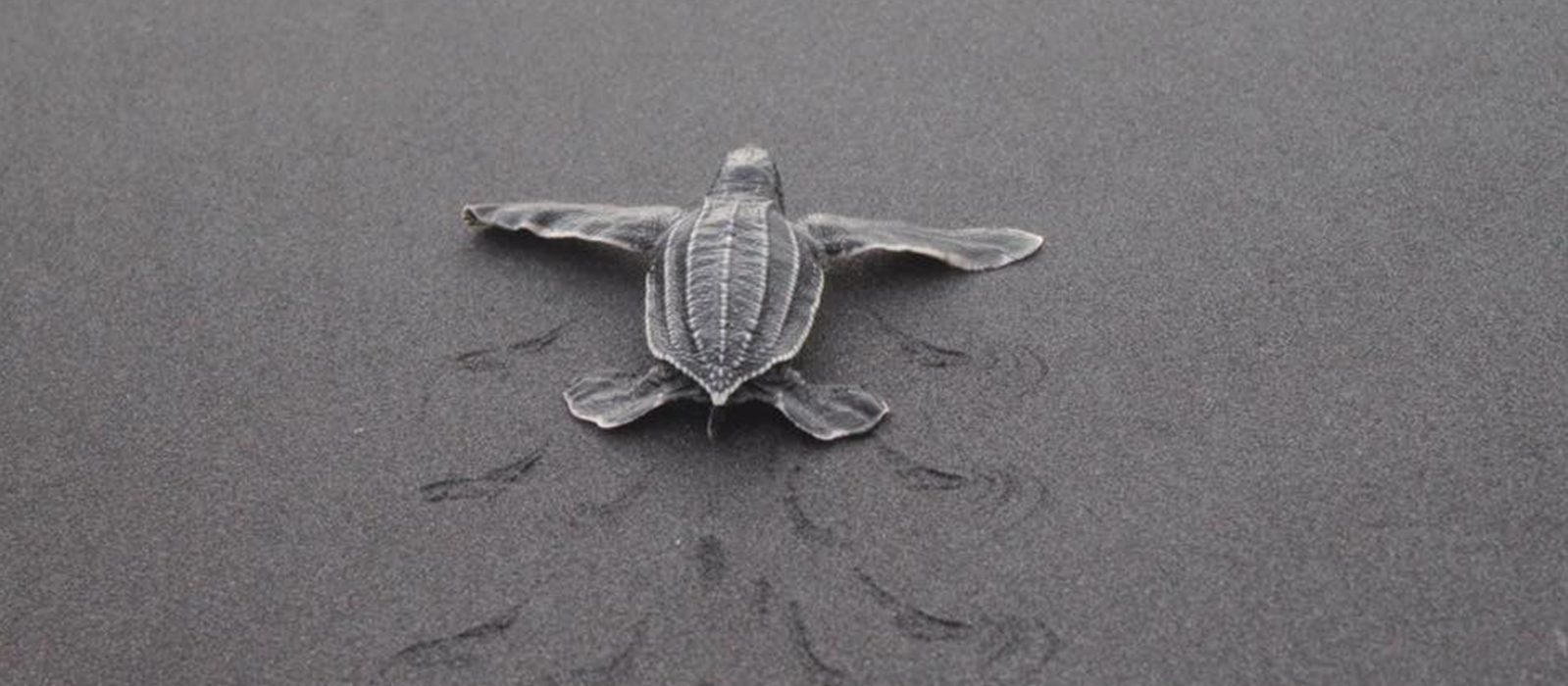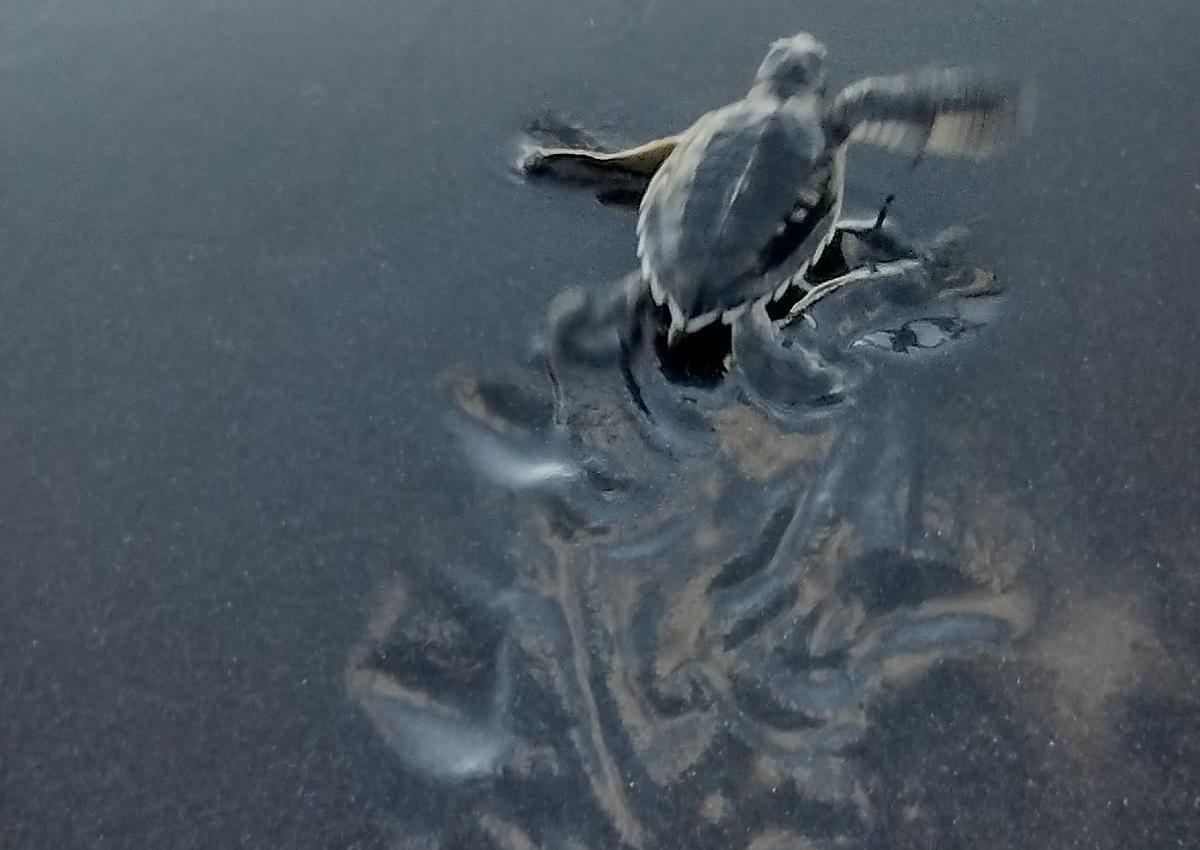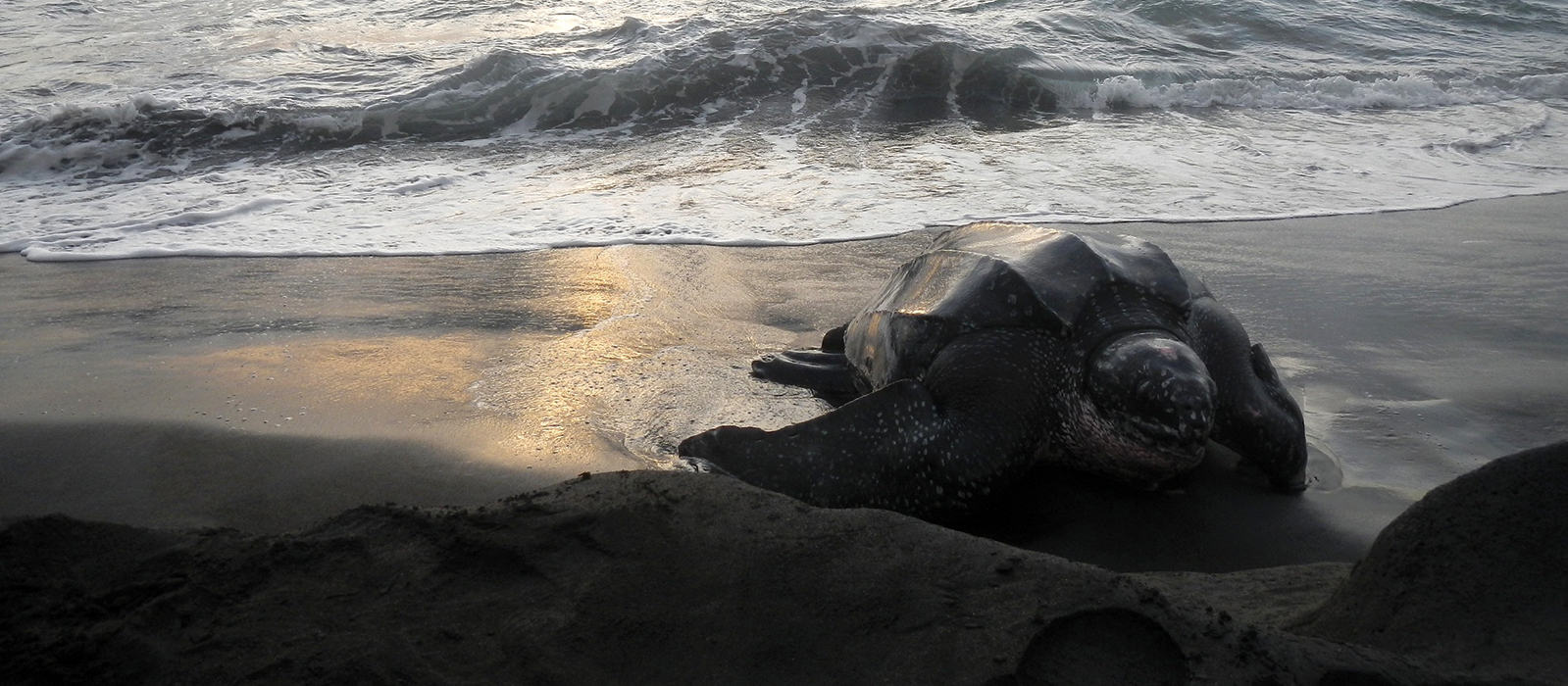Learn About our Turtle Species
Three species of endangered sea turtles nest and hatch on Rosalie Bay’s black sand beach:
- Leatherback
- Hawksbill
- Green

Learn About our Turtle Species
Three species of endangered sea turtles nest and hatch on Rosalie Bay’s black sand beach:
- Leatherback
- Hawksbill
- Green
Leatherback Sea Turtles
The leatherback sea turtle, the largest turtle in the world is the only sea turtle species which has no scales and has a hard shell. Their name derives for their tough rubbery skin and have existed since the age of the dinosaurs.
Leatherback turtles migrate and swim over 10,000 miles yearly between their nesting and foraging grounds and are amazing divers with a dive record as far as 4000 feet deeper than most marine mammals.

Leatherback Sea Turtles
Hawksbill Sea Turtles
Hawksbill sea turtles can be found worldwide, living in the tropical and sub-tropical oceans. They are named after their unique beak-like mouth, which resembles the hawk’s beak, which is perfect for finding food sources in hard-to-reach cracks and crevices. Their main source of food is that of sea sponges, this diet helps the Hawksbill turtle to play a key role in the function of marine ecosystems. These turtles have a beautiful shell known as “tortoise shell”.

Hawksbill Sea Turtles
Green Sea Turtles

Green Sea Turtles
Sea Turtle Season Activities
- Educational walk – Learn more about these endangered sea turtles and our conservation efforts on Dominica with a guided walk along the beach and tour of the turtle hatchery.
- Participate in conservation efforts – Guests are invited to help in our efforts, including patrolling the beach to protect nesting turtles, assisting researchers in collecting data, or watching our experts relocate nests that may be too close to the ocean to the safety of our turtle hatchery. Volunteer to care for the hatcheries or beach cleanups by contacting Judy.
- Sea turtle nesting – Since sea turtles are most likely to nest at night, we offer a Turtle Wake-Up Call for interested guests. Imagine seeing a giant sea turtle appear and crawl on the sand to lay eggs! It’s a magical moment you won’t want to miss. Read what National Geographic Traveler had to say about it.
- Sea turtle hatching – Another magical moment is when tiny hatchlings emerge from their nest for their initial journey to sea. Some nests hatch naturally, while others have a scheduled assisted release to increase their chances of survival.
There is a US$20 donation for turtle talks and turtle watches, all going toward NET and their continued efforts to keep the turtle program alive.
Sea Turtle Activities
- Educational walk
- Participate in conservation efforts
- Sea turtle nesting
- Sea turtle hatching
There is a US$12 donation for turtle talks and turtle watches, all going toward NET and their continued efforts to keep the turtle program alive.

Sea Turtle History at Rosalie Bay
It was thrilling when Rosalie Bay first discovered sea turtles nesting on the property. To protect these creatures for future generations, the resort team worked with WIDECAST (Wider Caribbean Sea Turtle Network) and founded the first sea turtle conservation program on Dominica.
Originally named RoSTI (Rosalie Sea Turtle Initiative), the program engages locals and guests in opportunities to help in the recovery of sea turtles on the island and throughout the Caribbean. Efforts include night patrol during nesting season, clean up on nesting beaches, education programs and data collection.
This successful program began at Rosalie Bay, but has become island wide. In 2003, there were just seven leatherback nests. By 2010, there were 69 nests of three species of sea turtles and a 100% survival with all nesting species protected.
We’re proud that our efforts have significantly increased the survival rates of endangered Leatherback, Green and Hawksbill sea turtles, and also honored to have earned a Travel + Leisure Global Vision Award for Conservation.
Sea Turtle History at Rosalie Bay
It was thrilling when Rosalie Bay first discovered sea turtles nesting on the property. To protect these creatures for future generations, the resort team worked with WIDECAST (Wider Caribbean Sea Turtle Network) and founded the first sea turtle conservation program on Dominica.
Originally named RoSTI (Rosalie Sea Turtle Initiative), the program engages locals and guests in opportunities to help in the recovery of sea turtles on the island and throughout the Caribbean. Efforts include night patrol during nesting season, clean up on nesting beaches, education programs and data collection.
This successful program began at Rosalie Bay, but has become island wide. In 2003, there were just seven leatherback nests. By 2010, there were 69 nests of three species of sea turtles and a 100% survival with all nesting species protected.
We’re proud that our efforts have significantly increased the survival rates of endangered Leatherback, Green and Hawksbill sea turtles, and also honored to have earned a Travel + Leisure Global Vision Award for Conservation.
